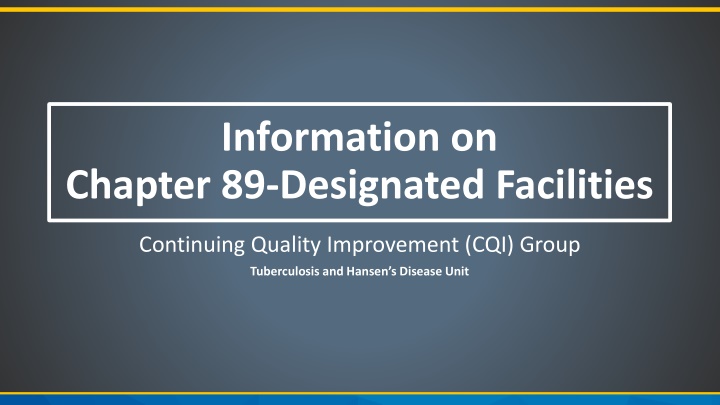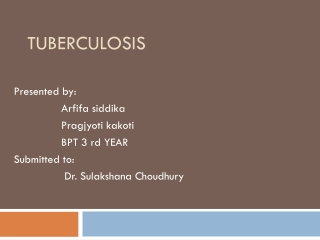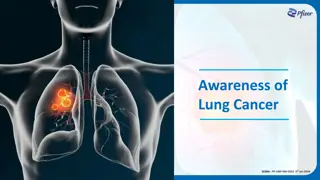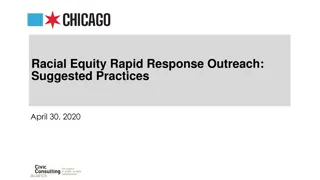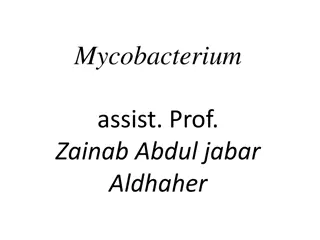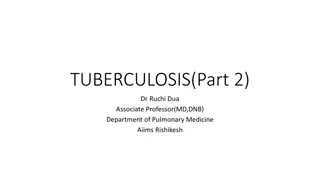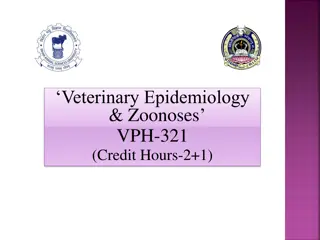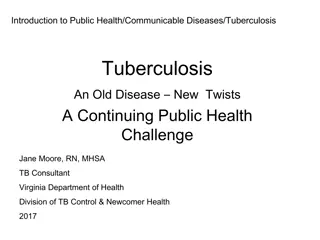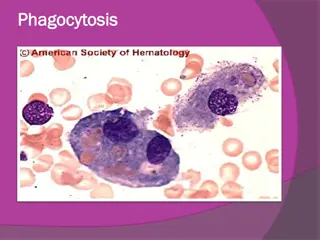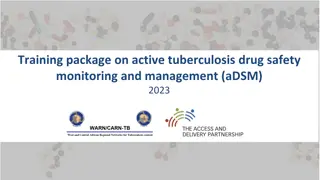Guidelines for Tuberculosis Screening and Reporting in Chapter 89 Designated Facilities
Guidelines outlined in Chapter 89 for designated facilities in Texas include screening requirements, common terminology, reporting procedures, and conversion scenarios for tuberculosis testing. The definition of a Chapter 89-designated facility, screening guidelines, and reporting requirements are covered in detail to ensure proper monitoring and management of TB cases within correctional facilities. Useful resources for correctional TB monthly reports are also provided.
Download Presentation

Please find below an Image/Link to download the presentation.
The content on the website is provided AS IS for your information and personal use only. It may not be sold, licensed, or shared on other websites without obtaining consent from the author.If you encounter any issues during the download, it is possible that the publisher has removed the file from their server.
You are allowed to download the files provided on this website for personal or commercial use, subject to the condition that they are used lawfully. All files are the property of their respective owners.
The content on the website is provided AS IS for your information and personal use only. It may not be sold, licensed, or shared on other websites without obtaining consent from the author.
E N D
Presentation Transcript
Information on Chapter 89-Designated Facilities Continuing Quality Improvement (CQI) Group Tuberculosis and Hansen s Disease Unit
Objectives Provide the definition of a Chapter 89-designated facility in Texas Review the screening requirements and guidelines from the: Texas Health and Safety Code (HSC) Texas Administrative Code (TAC) Provide common terminology Discuss the screening algorithm Discuss the reporting requirements of: TB infection TB disease (known/suspected) Discuss the correctional TB monthly report submission process Discuss conversion scenarios regarding: Tuberculin Skin Test (TST) Interferon Gamma Release Assay (IGRA) Link useful resources for correctional TB monthly reports
Definition of a Chapter 89-Designated Facility A jail that: 1. Has a capacity of at least 100 beds; or 2. Houses inmates: a. Transferred from a county jail that has a capacity of at least 100 beds; or b. From another state Jail means: County jail; or Facility for the confinement of persons accused of an offense that is: a. Operated by a municipality or under contract with a municipality; or b. Operated by a vendor under contract with a community supervision and corrections department Reference: Texas Health and Safety Code, Chapter 89, Sections 89.001, 89.002
TB Screening Requirements and Guidelines 1. Each inmate in a jail or community corrections facility shall undergo a screening test for tuberculosis infection if confined for more than seven days 2. Exceptions: Inmate has written documentation of a screening test within the last twelve months; or Documented history of a positive TST or IGRA; or Inmate has a written documented history of a severe reaction to a TST; or Documented history of treatment completion for TB disease Adapted from: Texas Health and Safety Code, Chapter 89, Section 89.051 and Texas Administrative Code, Chapter 97, Rule 97.173
Common Terminology Prior Positive Written documented history of a previous positive TST written in millimeters or an IGRA TB Infection Determined by a positive result from an FDA-approved Interferon Gamma Release Assay (IGRA) test such as T-Spot TB or QuantiFERON - TB GOLD In-Tube Test or a tuberculin skin test, and a normal chest radiograph with no presenting symptoms of TB disease. A clinician s diagnosis must always be obtained to determine TB infection. TB Disease TB Disease Active TB disease is diagnosed by medical history, physical evaluation, chest x-ray, and other laboratory tests (i.e., isolation of M. tuberculosis complex from a clinical specimen). Suspected with TB Disease Clinical suspicion of active TB is based on signs and symptoms and/or abnormalities on chest x-ray AND the clinician intends for the client to be placed in isolation OR placed on 4-drug therapy. If TB is suspected, a complete evaluation must be performed while waiting for final laboratory results. Positive Reactor An induration of 10 or more millimeters; or An induration of 5 or more millimeters for: o People who are infected with human immunodeficiency virus (HIV); or o Recent contacts to TB Cases; or o People with chest x-ray findings suggestive of previous TB disease; or o People with organ transplants; or o Other immunocompromised persons receiving the equivalent of 15 mg/d or greater of prednisone for one month or more Conversion for a Chapter 89-Designated Facility A change from a documented negative TST or IGRA to a positive TST or IGRA during the time of residence in the facility
DSHS Screening Algorithm for Incarcerated Individuals
Reporting Requirements of TB Infection and TB Disease TB infection should be reported within one week of diagnosis. Includes the following: Positive TST or IGRA test; and A normal chest x-ray (CXR); and No signs and symptoms consistent with TB disease TB disease (known/suspected) should be reported within one day of diagnosis. Includes the following: Suspected tuberculosis disease pending final laboratory results; Positive nucleic acid amplification tests (NAAT); Clinically or laboratory confirmed tuberculosis disease Reminder: Please complete the TB-400 (Report of Case and Patient Services) when reporting a case or suspected case to your local or regional health department.
Correctional TB Monthly Report Submission Process Chapter 89- Designated Facility Submit reports by the 5th day of the following reporting month Local or Regional Health Department Review and perform data quality and data accuracy checks Upload reports to the DSHS TB Program, via GlobalScape by the 15th day of the following reporting month Continuing Quality Improvement (CQI) Team reviews, analyzes, and enters data into an internal database DSHS TB Unit Monthly reports not received from the Chapter 89-designated facility and/or health department by their due date will be sent formal reminders and/or delinquency notices from the DSHS TB Unit.
Significance of Conversions A converter likely has a new M. Tuberculosis infection A converter is at an increased risk of developing TB disease The risk of developing TB disease is highest within the first two years of infection Cluster of persons with TB test conversions at your facility may be an indication of ongoing transmission.
Things to Consider Was the inmate exposed to TB prior to incarceration? Does the inmate have other risk factors that make them more susceptible to infection? Does your facility have a strong infection control plan? Are there opportunities to strengthen screening and isolation practices?
A Decision to Test is a Decision to Think (Sample Scenario) A 45-year-old male inmate has been incarcerated at facility A for the past 12 months. The individual had a negative baseline TST and has lost about 25 pounds within the last four months. He has complained of malaise and night sweats and denies having a cough or fever. There also was a negative TST result during his annual screening. Question: Does he have TB disease? Answer: While it is possible that the inmate may have TB, it is important to suspect TB regardless of skin test reactions when the patient is experiencing signs and symptoms consistent with TB. The inmate should have a thorough medical evaluation to make a diagnosis. and be provided treatment (if indicated)
TST Conversion (Scenario 1) Definition: A change from a documented negative TST or IGRA to a positive TST or IGRA during the time of residence in the facility. Scenario 1: Inmate remained at the facility between the baseline negative and the recent positive test result. You have been given the following information: Baseline Negative Test Information Annual Positive Test Information Book-in date 8/23/2020 8/23/2020 Date TST placed 8/28/2020 8/27/2021 Date TST read 8/30/2020 8/29/2021 Reading (mm) 0mm 10mm Interpretation: This is a conversion for the facility as the inmate s test result changed from negative at baseline to positive during annual screening.
TST Conversion (Scenario 2) Definition: A change from a documented negative TST or IGRA to a positive TST or IGRA during the time of residence in the facility. Scenario 2:HIV-infected inmate remained at the facility between the baseline negative and the recent positive test results. You have been given the following information: Baseline Negative Test Information Annual Positive Test Information Book-in date 3/7/2019 3/7/2019 Date TST placed 3/9/2019 3/10/2020 Date TST read 3/12/2019 3/13/2020 Reading (mm) 0mm 5mm Interpretation: This is a conversion for the facility as the immunocompromised inmate s test result changed from negative at baseline to positive during annual screening.
IGRA Conversion Scenario Definition: A change from a documented negative TST or IGRA to a positive TST or IGRA during the time of residence in the facility. Scenario 1: Inmate is booked and has a negative IGRA. Upon annual testing, the IGRA is positive. Baseline Test Information Annual Test Information Book-in date 9/20/2019 9/20/2019 Date of IGRA 9/25/2019 9/26/2020 Test Result Negative Positive Interpretation: This is a conversion for the facility as the inmate s test result changed from negative at baseline to positive during annual screening.
Resources Epi Case Criteria for TB (texas.gov) TB Forms One-pager Fact Sheet Correctional TB Reporting Frequently Asked Questions (FAQ) Monthly Correctional TB Form (PDF) and Instructions (PDF) Report of TB Conditions Form (PDF and Excel) and Instructions (PDF) Screening Algorithm for Inmates and Employees/Volunteer
High-Level Summary 1. TB infection and TB disease (known/suspected) are notifiable conditions and are required to be reported in a timely manner. 2. The monthly correctional TB report and the Report of TB Conditions form must be submitted to the local or regional health department by the 5th day of the following report month. 3. Screening should be a holistic process. 4. Reports should be accurate and complete. 5. Reach out to your correctional liaison for questions regarding reporting and completion. 6. Your correctional liaison may reach out for clarification and/or revisions prior to submission to TB Unit for final review.
